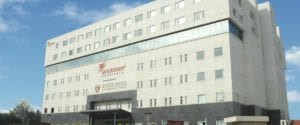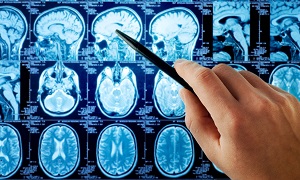Best Doctors in India for Cholesteatoma Treatment
Best Hospitals in India for Cholesteatoma Treatment
S L Raheja Hospital, Mahim, Mumbai
- City: Mumbai, India
Hospital Highlights:
- SL Raheja hospital is a 140-bed multi-specialty tertiary care hospital that is being managed by Fortis Healthcare Ltd.
- The hospital is a benchmark in healthcare and medical facilities in the neighborhood of Mahim & the western suburbs.
- L.Raheja Hospital, Mahim has one of the most effective ICU and Casualty care services.
- The hospital provides specialty medical services in Cardiology, Oncology, Neurology, Orthopedics, Mother & Child Care, and in Diabetes.
Wockhardt Hospitals, Mumbai
- City: Mumbai, India
Hospital Highlights:
- Wockhardt Hospitals were established in the year 1973, originally called First Hospitals and Heart Institute.
- Wockhardt Hospitals are super specialty health care networks in India, nurtured by Wockhardt Ltd, India’s 5th largest Pharmaceutical and Healthcare company.
- Wockhardt Hospitals is associated with Partners Harvard Medical International, an international arm of Harvard Medical School, USA.
- Wockhardt Heart Hospital performed India’s first endoscopic heart surgery.
- The hospital has a state-of-the-art infrastructure equipped with the latest technologies and modern equipment.
- It has special Centers of Excellence dedicated to the major specialties to provide hassle-free and high-quality clinical care.
Pushpawati Singhania Hospital & Research Institute, New Delhi
- City: New Delhi, India
Hospital Highlights:
- Established in 1996, Pushpawati Singhania Research Institute is one of the top hospitals in the NCR region, as well as one of the top facilities in India for gastroenterology. The hospital is one of South Asia’s first institutes in medical and surgical treatment for diseases related to digestion.
- The hospital is equipped with state-of-the art facilities coupled with the latest equipment as well as renowned consultants from various parts of India as well as other parts of the world.
W Pratiksha Hospital, Gurgaon
- City: Gurugram, India
Hospital Highlights:
- W Pratiksha Hospital, Gurugram, is one of the best hospitals in the NCR region. It is also a top hospital in India for IVF. Since its inception, the hospital has performed over 5500 successful IVFs. The hospital also specializes in gynecology.
- With over 20 years of experience in providing quality healthcare, the hospital is known as one of the most trusted and valued health providers in India.
- Equipped with world-class medical facilities and advanced technology, the hospital’s doctors and clinicians also have a track record of delivering excellent results. The hospital is also known for focusing on preventive well-being as much as on curative treatment.
- The hospital has earned the trust of its patients, by providing the best available treatments at affordable costs.
Narayana Superspeciality Hospital, Gurugram
- City: Gurugram, India
Hospital Highlights:
- Situated near DLF Cyber City, Gurugram, Narayana Superspecialty Hospital is one of the top medical facilities in the Delhi NCR region, catering to the needs of the people. Known for its commitment to quality medical care and patient service, the hospital is a state-of-the-art facility with planned and well-equipped sections, which includes a spacious OPD area as well as comfortable patient rooms.
- It is the closest super-specialty hospital from Indira Gandhi International Airport towards Gurugram, and also the nearest super specialty hospital from DLF Cyber City. It is also close to major residential areas in Gurugram.
- It is part of the renowned Narayana Health Group. Established in 2000, by Dr. Devi Shetty, a renowned cardiac surgeon, it has grown to be one fo India’s leading healthcare groups.
Sir Ganga Ram Hospital, New Delhi
- City: New Delhi, India
Hospital Highlights:
- Sir Ganga Ram Hospital, New Delhi is known to provide the latest medical procedures with the latest technology in all of its units.
- The hospital has a team of reputed doctors, nurses, and healthcare professionals that ensure that patients receive quality care at affordable costs.
- Staffed with a team of highly qualified doctors, dedicated nurses, and paramedical and non-medical staff, the hospital aims to lead in healthcare delivery, medical education, training, and research.
- As per the vision of the founder, the hospital also provides free treatment to the economically weaker sections of society.
- Sir Ganga Ram Hospital also provides training to young doctors under the Diplomate in National Board(DNB) program. The DNB program at the hospital was started in 1984 and it is known for currently running the maximum number of DNB specialties in the country. It also has the distinction of having the first bone bank in India.
CK Birla Hospital, Gurugram
- City: Gurugram, India
Hospital Highlights:
- The CK Birla Hospital in Gurugram is a NABH-accredited multi-specialty hospital.
- The hospital strives to increase the quality of healthcare by focusing on UK NHS nurse and midwife training requirements. Policies and practices derived from the National Institute for Health and Treatment Excellence (NICE) recommendations in the United Kingdom ensuring that a strong focus on safety, high-quality clinical care, and sanitation is maintained.
- The hospital’s cutting-edge technology and facilities allow for real-time communication and seamless collaboration among caregivers, ensuring accuracy and the best possible results. Those with foreign experience and accreditations make up part of the hospital’s team of clinicians.
KIMS Hospital, Hyderabad
- City: Hyderabad, India
Hospital Highlights:
- KIMS Hospital (a brand name of Krishna Institute of Medical Sciences) is one of the largest and best multi-speciality hospitals in Hyderabad. The hospital provides various treatments to an enormous number of patients.
- The hospital has a capacity of more than 3000 beds. KIMS Hospitals offers different healthcare services in more than 25 specialities and super specialities.
- The hospital is equipped with modern medical equipment and technology. It has robotic equipment to provide minimal invasive techniques for patients.
- The hospital is aimed at providing world-class healthcare facilities and services at an affordable cost for patients.
- The various specialities and departments of the hospital include neurosciences, gastroenterology & hepatology, robotic science, reproductive sciences, dental science, oncological sciences, organ transplantation, heart and lung transplantation and mother and child care.
Fortis Hospital, Shalimar Bagh
- City: New Delhi, India
Hospital Highlights:
- Fortis Hospital in Shalimar Bagh is a multi-super specialty hospital that strives to provide world-class patient care by leaving no stone unturned.
- Fortis, Shalimar Bagh, with 262 beds and a 7.34-acre footprint, provides the best level of medical care through its team of doctors, nurses, technicians, and management professionals.
Reliance Hospital, Mumbai
- City: Mumbai, India
Hospital Highlights:
- Reliance Hospital is one of the best super-specialty care hospitals in Navi Mumbai.
- The main purpose of this hospital is to become a trustworthy place for the best health and hope for society. The hospital is well connected to the suburbs of Mumbai and Navi Mumbai.
- The hospital has various specialty departments, viz., Accident & Emergency, Anesthesiology, Dental Services, Dermatology, Diabetology, Dietetics Nutrition, Endocrinology, ENT, Gastroenterology, General Surgery, Gynaecology And Obstetrics, Hepato Pancreato Biliary Surgery, Infectious Disease, Internal Medicine, Interventional Radiology, Laboratory Medicine, Minimal Access Laparoscopic Surgery, Nephrology, Neurosciences, Opthalmology, Orthopaedics, Paediatrics, Pain Management Palliative Care, Physical Medicine Rehabilitation, Plastic And Reconstructive Surgery, Psychiatry, Pulmonary Medicine, Radiology, Rheumatology, Transplant, Urology Andrology, Vascular Surgery
CHOLESTEATOMA
Cholesteatoma is a condition in which an abnormal, noncancerous skin growth occurs in the middle ear, behind the eardrum. It continues to grow in size, and therefore if left untreated, it might lead to hearing loss. The condition may be a birth defect, although it is also generally caused by repeated middle ear infections.
This condition also often develops as a cyst, or sac, that sheds layers of its old skin. When these dead skin cells accumulate, the growth can increase in size and destroy the delicate bones of the middle ear. This might affect the hearing, balance as well as function of the facial muscles.
Symptoms
Generally, a cholesteatoma causes symptoms only in a single ear. The signs can include any of the following:
- Constant sound inside your ear
- Ear infection
- Pain in the ear
- Dizziness or vertigo
- A feeling of fullness in one ear
- A fluid that smells bad and leaks from the ears
- Weakness in half of the face
- Trouble hearing in one ear
If you’ve suffered from a cholesteatoma for a long time and haven’t treated it, it might grow into other areas of your ear, like the part used for balance. It may even turn into an infection in your inner ear or even in the brain. This can lead to a pus-filled swelling in your brain or meningitis. Both are rare.
Causes
A cholesteatoma might occur due to multiple reasons:
- Cholesteatomas are generally caused by repeated middle-ear infections. If left untreated, infections from a long-established cholesteatoma might spread to the inner ear and the brain.
- Perforation of the eardrum, which can be caused by a trauma or an infection, might provide an opening for the skin of the outer surface of the eardrum, to grow through.
- Chronic ear infections, sinus infections, allergies, and colds might affect the Eustachian tube i.e. the tube connecting the back of your nose to your middle ear. This can keep it from equalizing air pressure on either side of your eardrum. This might cause a partial vacuum in your middle ear that may pull a section of your eardrum into it. This eardrum tissue can thus, turn into a cholesteatoma.
- Although rare, some people can also be born with a small remnant of skin that is trapped in the middle ear.
- As it grows larger, the cholesteatoma gets filled with sloughed-off skin cells, fluids, along with other wastes. This creates an ideal environment for infection. The growing cyst also increases pressure in your ear, which may lead to hearing loss. If it grows very large, it can destroy the surrounding bone, thus damaging the eardrum, and the bones inside your ear and near your brain, as well as your facial nerves. At this stage, it is possible that permanent hearing loss may occur.
Diagnosis
Your doctor is going to need to look inside your ear with an otoscope. This instrument has a magnifying glass with a light on it. This also tests how well you are able to hear sounds to check if your cholesteatoma has affected your hearing.
If your doctor thinks that you are having a cholesteatoma, then they are going to refer you to an ear, nose, or throat specialist. In order to look more closely at your cholesteatoma, your doctor will likely recommend the following tests:
CT Scan or Computerized Tomography
This is a series of X-ray images that are able to show a detailed image of the bones, soft tissues as well as blood vessels inside your ears. This test can let your doctor known if your cholesteatoma has grown into the bones of your ear, which may mess with your hearing and balance. Your doctor might want to do this scan if surgery is a better option for you.
MRI or Magnetic Resonance Imaging
If a CT scan is able to show your doctor something that requires a closer look, then an MRI is used if your doctor suspects an infection has spread to the brain.
Treatment
Surgery
Although there is no medicine that can make cholesteatoma go away, it is possible to remove it surgically. Surgery generally doesn’t require more than 2 to 3 hours, and you won’t need to stay in a hospital.
You’ll also receive medicine to make you sleep, and the removal can be done in either of two ways:
Mastoidectomy
Tympanoplasty
This can fix damage to your eardrum or the tympanic membrane. Your surgeon is going to use cartilage or muscle from another part of your ear for filling any holes in your eardrum.
Surgery also often helps with your hearing loss partially.
Cholesteatomas can sometimes be aggressive. They may return if not fully removed. It is therefore very important to see your doctor for regular follow-up visits.
Complications
If left untreated, a cholesteatoma is going to grow larger and cause complications. Complications can range from mild to severe.
The dead skin cells accumulating in the ear help in providing an ideal environment for bacteria as well as fungi to thrive. This means that the cyst can become infected, and thus cause inflammation as well as continual ear drainage.
Over time, this condition may also destroy the surrounding bone. It might cause damage to the eardrum, the bones inside the ear, the bones near the brain, as well as the nerves of the face. Permanent hearing loss might also occur if the bones within the ear are broken.
This cyst might even spread into the face if it continues to grow and this can lead to facial weakness.
Some other potential complications include:
- Swelling of the inner ear
- Paralysis of the facial muscles
- Chronic infection of the ear·
- Meningitis, which is a life-threatening brain infection
- Brain abscesses, or pus collecting in the brain













